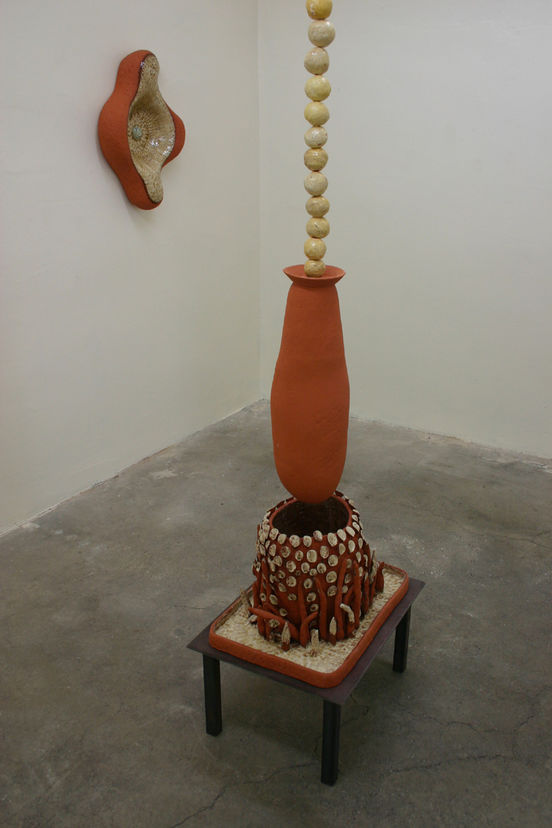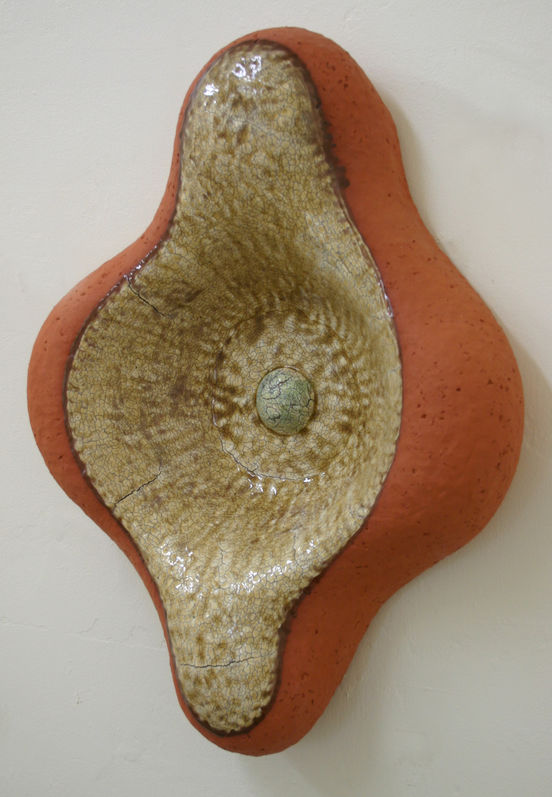An abiding interest in topiary (hedge and shrub sculpture) is one distinguishing feature of American ceramic sculptor Scott Chamberlin's artistic practice. Topiary, of course, is a complex and long held tradition involving the trans-generational maintenance and subtle grooming of living plants into various shapes. Many active topiary gardens in Europe predate the colonization of New Zealand not just by decades, but by hundreds of years.
It is fitting given his commitment to topiary that Chamberlin, a Visiting Professor in the Contemporary Craft Program, Unitec in 2009, during the course of his artist residency in Auckland has closely observed - and taken inspiration from - the many unusual plant forms that make up our flora and fauna. The title of Chamberlin's Objectspace Vault installation is suggestive of the approach he has taken with his studio practice while in New Zealand.
Like a witness to an 'overheard conversation' - the conversation being New Zealand's Diaspora of recently immigrated peoples and our relation to the landscape - the new works that have resulted bear traces of his present inspiration but they also lean on his experiences as both sculptor and topiarist.
Extracting reproductive forms and other attributes from our foliage, in these new works the native forest of New Zealand and our engagement with it is investigated with fresh eyes. Chamberlin has created a terracotta landscape combining plant-like elements with subtle and erotic forms suggestive of the body.
Chamberlin observes of his New Zealand muse: "One can see acknowledgement of many visual remnants of my impressions of NZ. One will see wigged (colonial) people, one will see foreigners, one will see ornamentation (from a European perspective) one will see my response to a bewildering verdancy... much flora and fauna, some "native" and some not. One will see some pondering of what "native" means to varying constituents."
Mark Masuoka, Director of the Museum of Contemporary Art/Denver, has observed that Chamberlin "continually mines a rich vein of ideas by fusing material sensuality with a tactile consciousness and the pleasures of spontaneity. The structural clarity displayed enables the viewer to experience the presence of the object with a ritualistic simplicity. His lush, voluptuous forms are clearly not utilitarian, but function in defining internal as well as external space."
--
Scott Chamberlin is the 2009 Visiting Professor/Artist in Residence at the Department of Design, Faculty of Creative Industries and Business, Unitec, as well as international judge of the 2009 Portage Ceramics Awards. Snowhite Gallery at Unitec is showing Fertile Matters, an important solo exhibition of Chamberlin's work (until 19 October.) Chamberlin was born in California in 1948 and holds a Masters Degree from Alfred University. He has featured in numerous US and international exhibitions and is currently a Professor in the Department of Art & Art History at the University of Colorado. Chamberlin is the recipient of two National Endowment for the Arts awards (1990, 1996) as well as a prestigious Pollock-Krasner Foundation Grant in 2001.

Scott Chamberlin, Overheard Conversation, 2009.

Scott Chamberlin, Overheard Conversation (detail), 2009.